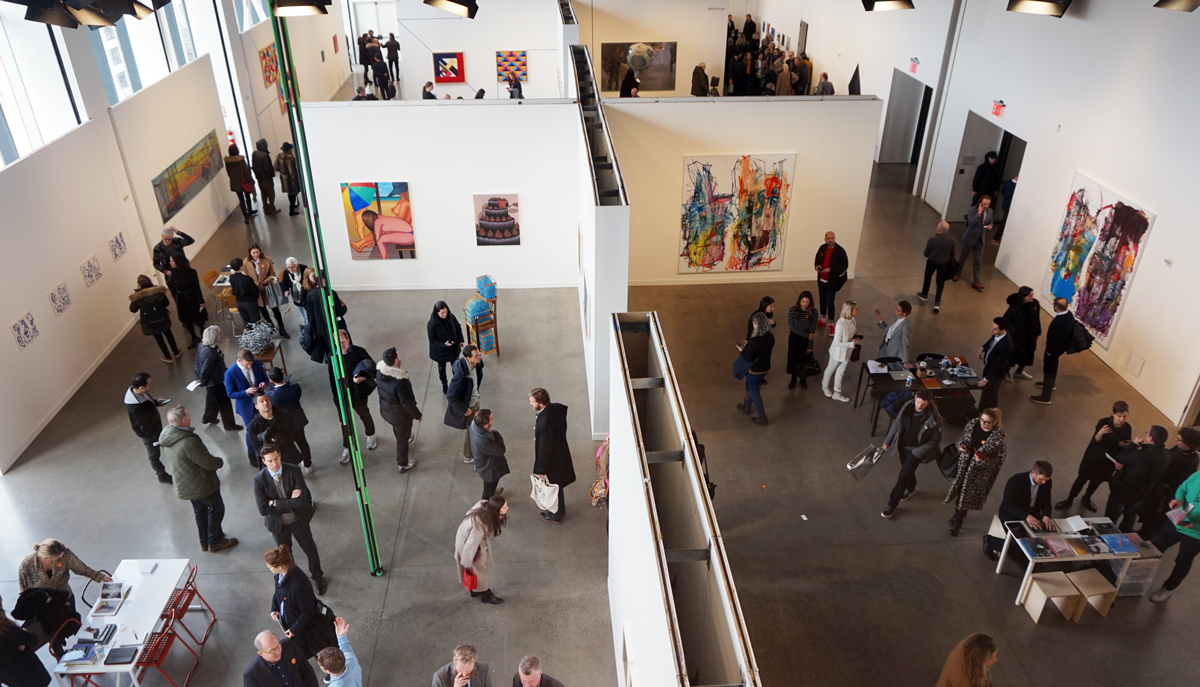[ad_1]
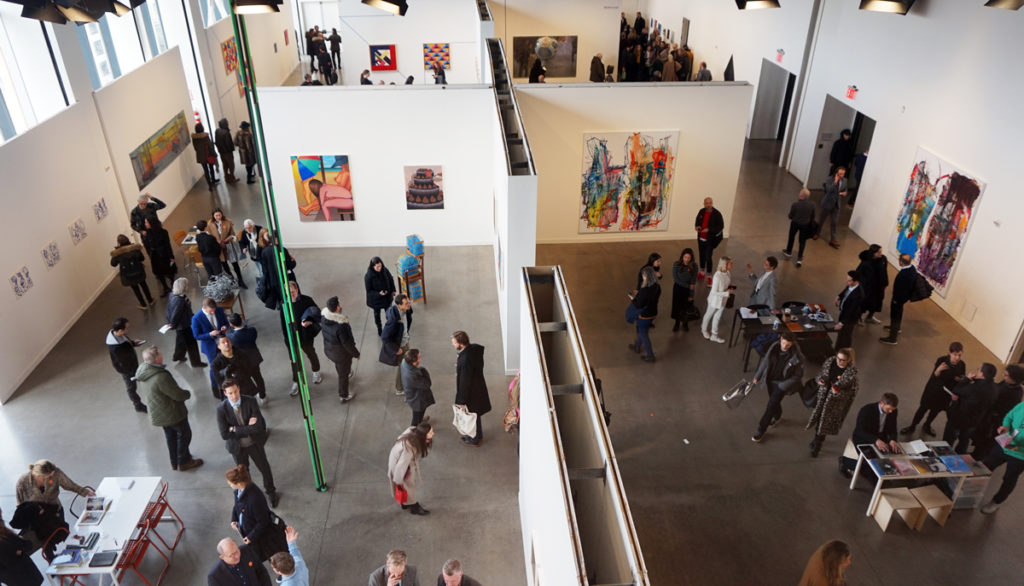
A view of the Independent art fair from above.
KATHERINE MCMAHON
As a long line queued against the icy winds of Lower Manhattan—the chattering classes nattering through chattering teeth—doors opened Thursday morning to the Independent art fair, stationed as in years past at Tribeca’s Spring Studios. Action was brisk from the get-go, as patrons made their way across four floors to see booths presented by 64 galleries. Attendees at the latest stop in a circuit that includes the Armory Show, Plan B, Spring/Break, and other fairs running through the weekend included the curators Hans Ulrich Obrist and Margot Norton as well as directors of local organizations (Jay Sanders of Artists Space, Simon Castets of the Swiss Institute, Flavin Judd of the Judd Foundation).
On the fair’s first floor, small ceramic sculptures evocative of oyster shells were arranged by the New Zealand–born, Brooklyn-based artist Kate Newby. “She’s collected glass off the street that gets melted in a kiln,” Simon Cole, director of the Toronto-based Cooper Cole gallery, said of features in the work that look like little pools of water. “It’s in a series of what she refers to as ‘puddles.’ The great thing about this piece is it can be displayed in a variety of different ways. Often they’re displayed on window sills to catch the light, or it can be spread out over a home.” The several dozen pieces are sold all together, under the title Wild owns the night (2019).
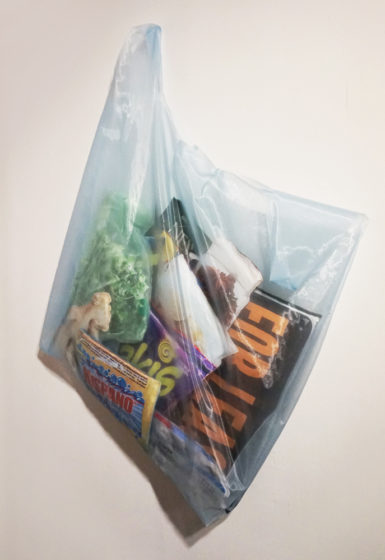
Work by Lucia Hierro at LatchKey Gallery’s booth.
KATHERINE MCMAHON
Nearby in a booth for the nomadic New York outfit LatchKey Gallery are fabric sculptures and wall hangings by Lucia Hierro. All part of a series titled “The Cost of Living,” the works include a supermarket receipt that has been blown up so that it’s 10 feet long, with an inventory of items like plantains, quinoa, and Goya-brand peas and beans. “They’re very mundane purchases, though some are culturally specific,” Hierro, a New Yorker of Dominican descent, said while gesturing toward a bag of fabric groceries memorializing products like Hispana laundry detergent. “It’s about how the things we consume become part of our identity and shape our identity.” Works of different sizes are on offer for prices between $5,000 and $12,000, and Hierro will open a show of additional pieces from the series on Saturday at Wallworks New York in the Bronx.
Upstairs, on the first of two bigger floors that serve as the heart of the fair, serene paintings by Fred Reichman set a mood. A longtime West Coast artist before his death in 2005, Reichman favored subjects like trees and animals looking alone and unbothered in peaceful light. “We had to bring a little color from California,” said Gerard O’Brien, owner of Los Angeles–based gallery the Landing. The paintings are for sale for $2,200 to $26,000, and the booth is giving out a nice pamphlet on the artist with an essay by John Yau.
[View more photos from the opening day of the fair.]
Serene in a very different way are vintage photographs by and of Albrecht Becker, who was imprisoned in 1935 for violating a Nazi law forbidding homosexuality in Germany (where the law stayed on the books until 1994). A sheet of text offered in the booth for the Cologne-based gallery Delmes & Zander cites the title of a film by the gay-rights activist Rosa von Praunheim—It Is Not the Homosexual Who Is Perverse, But the Society in Which He Lives—and the self-portraits feature Becker in underwear and thongs as well as nude, with abundant tattoos suggestive, the text says, of “the pleasures of pain.” The pictures are on offer for €4,400 to €6,300 (around $4,900 to $7,000).
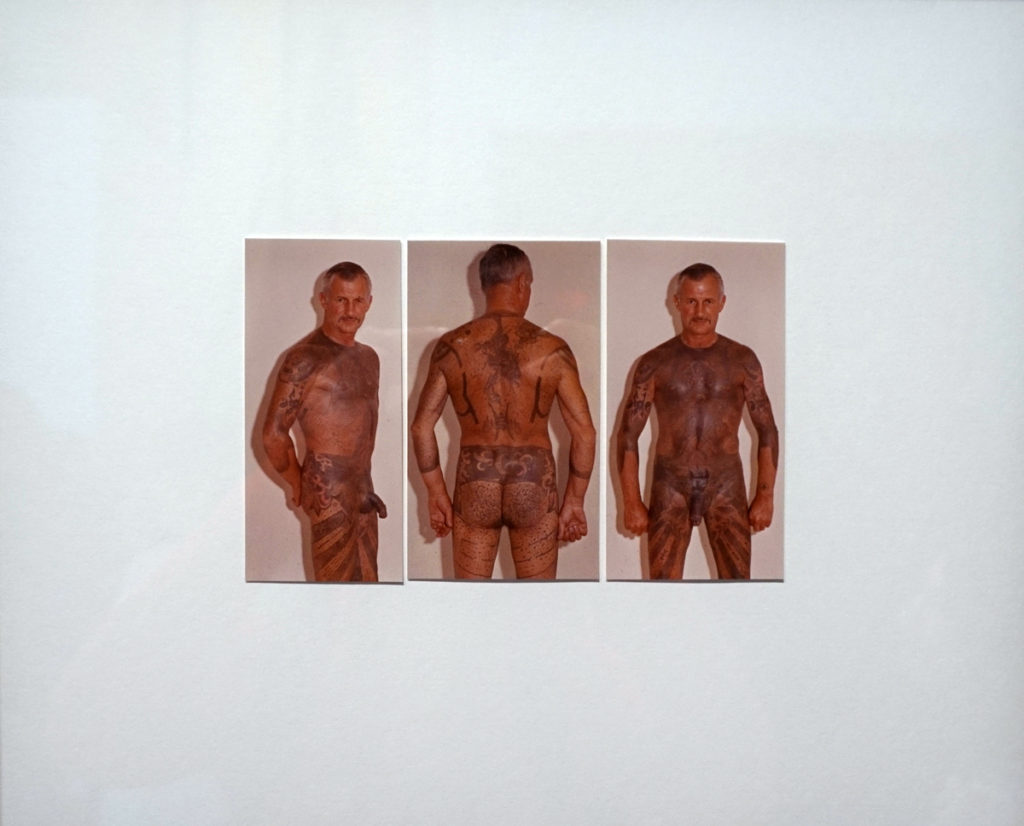
Work by Albrecht Becker by Delmes & Zander’s booth.
KATHERINE MCMAHON
One of the fair’s most exciting booths is that of Ricco/Maresca, which turned over its entire presentation to work by Gil Batle. The artist—formerly incarcerated in California for forging checks and troubles related to methamphetamine addiction and now based on an island in the Philippines—makes ostrich-egg sculptures that feature ornately carved renderings of strange visions. Surrounding those are drawings of imprisoned bodies amid tangles of barbed wire. “He developed his skill for art as a way to change his life,” said Kylie Ryu, gallery manager for the New York–based enterprise.
Some small works on paper by Batle resemble playing cards, with prisoners in place of kings and queens, and one monumental drawing shows a fantastical imagining of San Quentin State Prison. An ostrich-egg sculpture nearby tells the story, Ryu said, of “a doctor he met in prison who killed his wife and son and claimed they were abducted by aliens.” Within the first hour of the fair, one of four eggs priced at $14,000 was on hold, and a few other works had sold, including a five-piece drawing for $25,000.
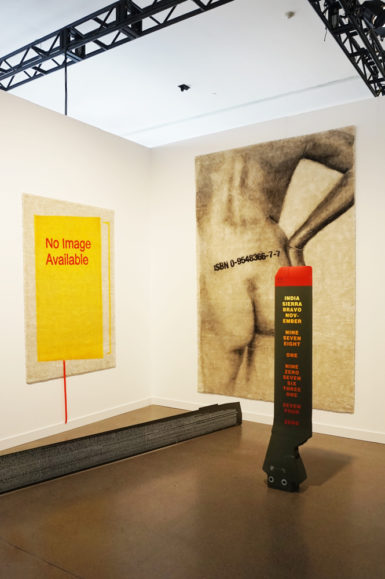
Work by Fiona Banner at Galerie Barbara Thumm’s booth.
KATHERINE MCMAHON
Galerie Barbara Thumm’s booth nearby is devoted to Fiona Banner, whose work typically deals with the increasingly weird world of publishing and subjects as diverse as the etymology of the word “fart” and the flow of pictures online. Portrait as a Book (2019), a painting executed on carpet, features the artist’s backside stamped with an ISBN number. “If you search [on Google], it’ll come up with the registered number,” Barbara Thumm, the Berlin gallery’s founder, said. Other works in the booth, which range in price from $38,000 to $60,000, caught eyes, including a nearly 16-foot-long helicopter blade printed with a historical text about the 11th-century Battle of Hastings in England. The words “LONG SAILS JUTTING OUT EACH SIDE” appear toward the beginning, and one can’t help but wonder whether that might figure into a sales-related pun.
On the sixth floor, the London- and Hong Kong–based gallery Rossi & Rossi is showcasing work by Siah Armajani, who is the subject of a retrospective uptown at the Met Breuer. One work towers above all the others: Dictionary for Building: Basement Window Under Front Door Steps (1985), a hulking sculpture that evokes a tumult of architectural forms. (It was priced at $175,000.) In a vitrine featuring models for works is a preparatory piece related to Bridge Over Tree (1970), a sculpture now on view in Brooklyn Bridge Park. Nearby, gallery owner Fabio Rossi chatted with Public Art Fund director Nicholas Baume, who was responsible for installing the work across the river.
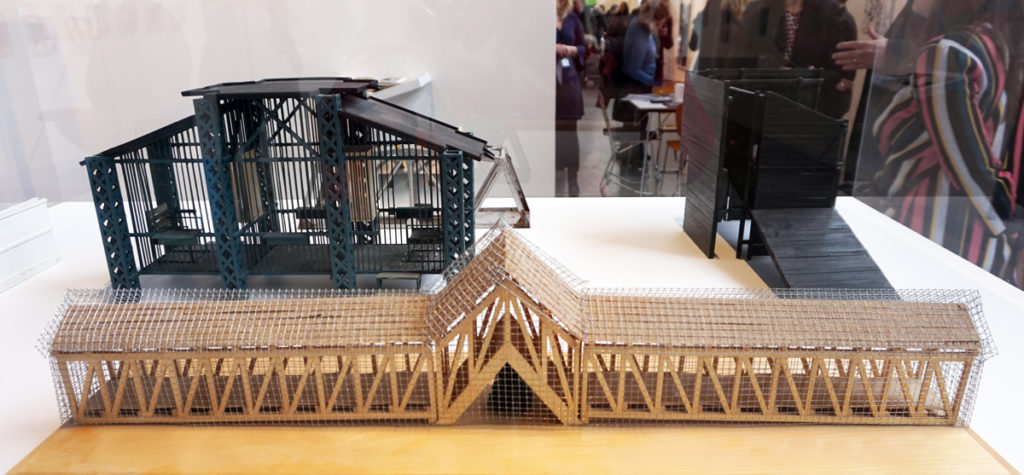
Work by Siah Armajani at Rossi & Rossi’s booth.
KATHERINE MCMAHON
Mysterious noise attracted fairgoers to the booth of New York’s Company Gallery, which is presenting Cajsa von Zeipel’s Aquarius (2019), a bust of a woman with mottled lips and hair slicked with a white substance that also includes two JBL speakers. Early in the day, the piece pulsed with music by the electronic-music maker GA31. (Gallery staffers could be seen controlling the clubby soundtrack with an iPad.) If you don’t like the music, don’t fret: You can buy it for $10,000 and have it play a song of your choice.
Upstairs on the small seventh floor, activity surrounded an area occupied by the beloved New York alternative space White Columns, where artist Joel Mesler is painting real-time portraits of sitters at the fair. Nearby hangs a series of prints, including one by Nick Relph focused on a superb DJ/producer with a sort of mechanical foil by his side. “Omar-S is a techno musician from Detroit, and when he started making his own records, he would handwrite the labels,” said White Columns director/curator Matthew Higgs. “This is Omar writing, and he happens to be wearing a GM T-shirt”—an allusion to the fabled car brand. “At some point, GM and NASA designed a robot that could write, so this is a collision of Detroit—the Motor City, hub of an American industry that once was—and the 21st century, when things have changed.”
The full set of six prints—by Relph as well as Joe Bradley, Kim Gordon, Klara Liden, Nate Lowman, and Adam McEwen—can be had for $1,500. It would be hard to imagine a purchase more imbued with the Independent spirt.
[ad_2]
Source link

